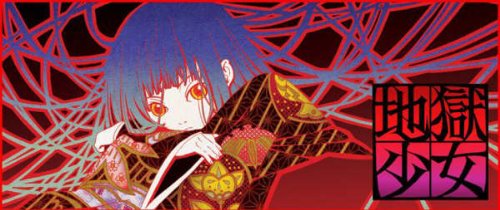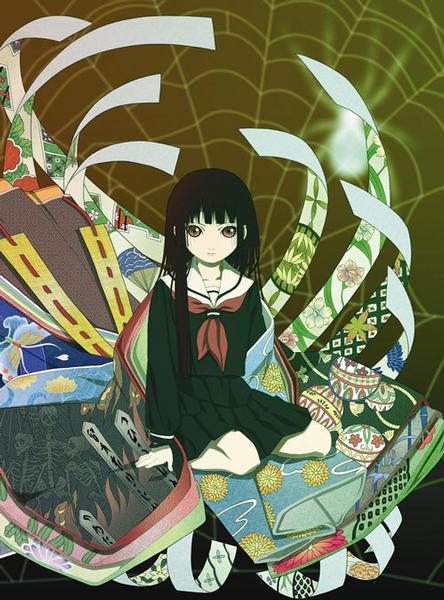 Once again its seems that I could not help but try to lighten my anime backlog so I ended up having a second Thanksgiving Marathon and watching the rest of Jigoku Shoujo Futakomori. Futakomori is the the follow up to the original Jigoku Shoujo and once again follows Enma Ai and the rest of Jigoku Tsuushin. Each episode follows the suffering of an individual from the beginning of the hatred to the point where they can no longer tolerate it and resort to accessing Jigoku Tsuushin. Each story is different and accurately showcases the boundlessness of human hatred and cruelty in the form of bullying, extortion, domestic violence, rape, torture, murder, and whatever else I have neglected to mention.
Once again its seems that I could not help but try to lighten my anime backlog so I ended up having a second Thanksgiving Marathon and watching the rest of Jigoku Shoujo Futakomori. Futakomori is the the follow up to the original Jigoku Shoujo and once again follows Enma Ai and the rest of Jigoku Tsuushin. Each episode follows the suffering of an individual from the beginning of the hatred to the point where they can no longer tolerate it and resort to accessing Jigoku Tsuushin. Each story is different and accurately showcases the boundlessness of human hatred and cruelty in the form of bullying, extortion, domestic violence, rape, torture, murder, and whatever else I have neglected to mention.
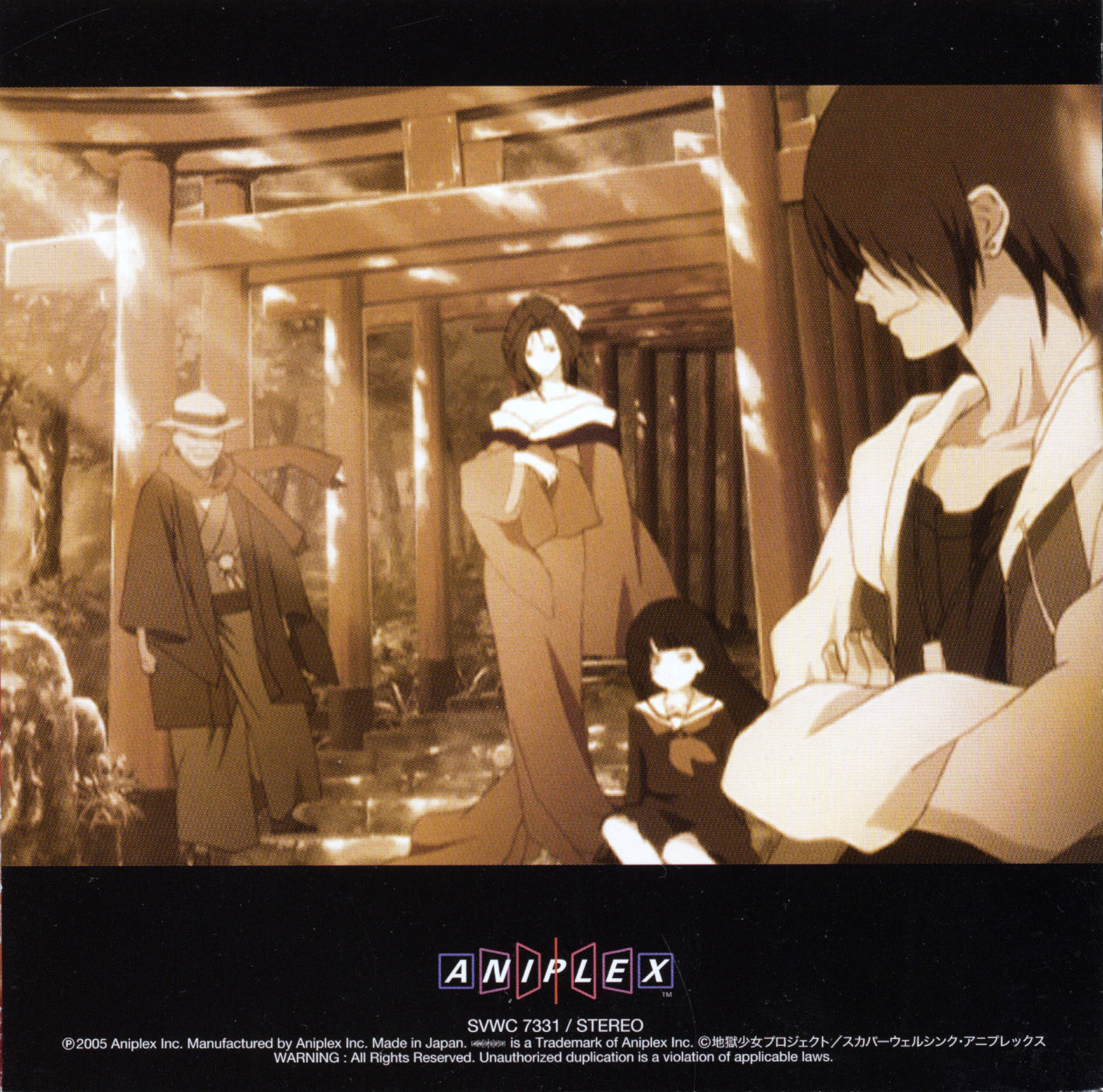 Jigoku Tsuushin (Hell Correspondence) is an urban legend about a mysterious website. They say that that you can only access Jigoku Tsuushin at midnight and only if you harbor enough hatred toward someone. The site is plain with only the text “あなたの怨み、晴らします。” (We will take revenge on your behalf.) and a text box. If you type the name of the person you hate and send it, it is said that Jigoku Shoujo will appear and give you a straw doll with a red string tied around it’s neck. If you pull the string, two holes will appear and the person you hate will immediately be sent to hell while you will also go to hell whenever it is you die. That is essentially what Jigoku Shoujo is all about.
Jigoku Tsuushin (Hell Correspondence) is an urban legend about a mysterious website. They say that that you can only access Jigoku Tsuushin at midnight and only if you harbor enough hatred toward someone. The site is plain with only the text “あなたの怨み、晴らします。” (We will take revenge on your behalf.) and a text box. If you type the name of the person you hate and send it, it is said that Jigoku Shoujo will appear and give you a straw doll with a red string tied around it’s neck. If you pull the string, two holes will appear and the person you hate will immediately be sent to hell while you will also go to hell whenever it is you die. That is essentially what Jigoku Shoujo is all about.
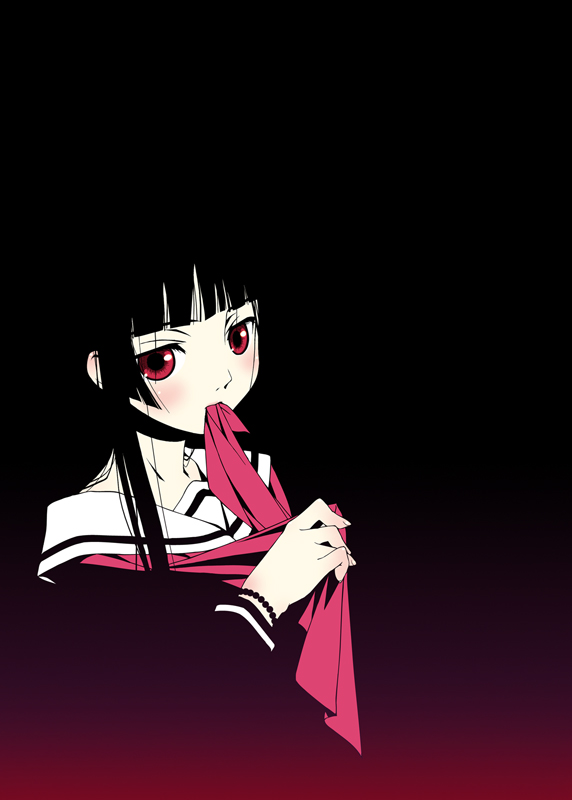 I love the second series but I like the original series a little better because the stories were more interconnected. Relatively early on in the first series, the two recurring characters Shibata Hajime and his daughter Tsugumi were introduced. Hajime is a journalist who hears rumors about Jigoku Tsuushin and decides to investigate. He learns that Enma Ai, the Jigoku Shoujo, is real and he wants to stop her. During an encounter with Enma Ai, Tsugumi makes a connection with Enma Ai that allows her to see what Enma Ai can see. Using Tsugumi’s ability, Hajime tracks down the individuals who have contacted Enma Ai and attempts to persuade them not to use her powers. Hajime’s attempts to stop Enma Ai eventually leads him to discover the truth behind her. The final episodes of the first series were depressing and are the reason why Enma Ai resides on my pantheon of favorite characters.
I love the second series but I like the original series a little better because the stories were more interconnected. Relatively early on in the first series, the two recurring characters Shibata Hajime and his daughter Tsugumi were introduced. Hajime is a journalist who hears rumors about Jigoku Tsuushin and decides to investigate. He learns that Enma Ai, the Jigoku Shoujo, is real and he wants to stop her. During an encounter with Enma Ai, Tsugumi makes a connection with Enma Ai that allows her to see what Enma Ai can see. Using Tsugumi’s ability, Hajime tracks down the individuals who have contacted Enma Ai and attempts to persuade them not to use her powers. Hajime’s attempts to stop Enma Ai eventually leads him to discover the truth behind her. The final episodes of the first series were depressing and are the reason why Enma Ai resides on my pantheon of favorite characters.
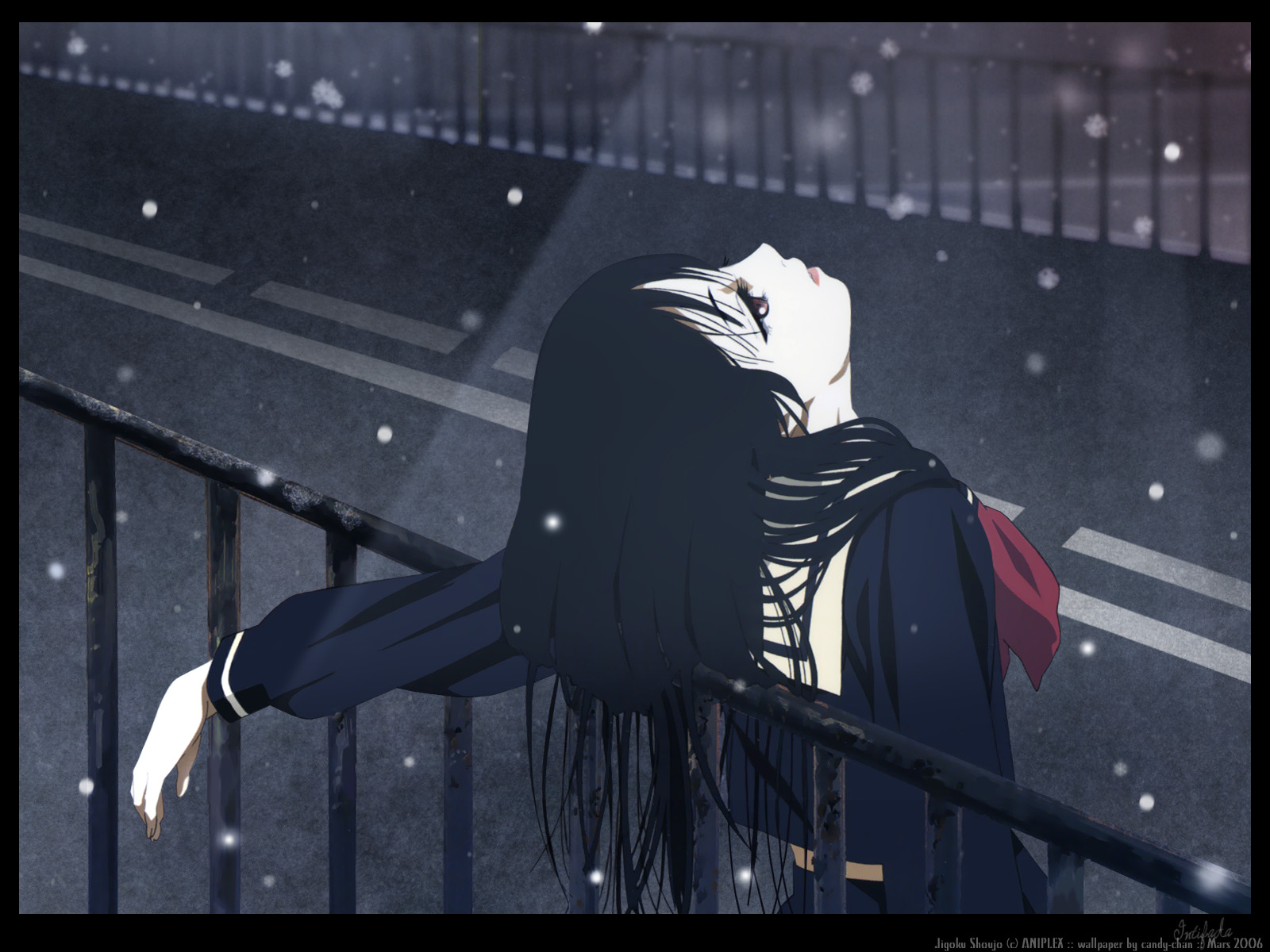 The second series focused mainly on the rest of the members of Jigoku Tsuushin with many back stories that really helped flesh out their characters and in turn revealed the complex emotions of Enma Ai. Despite seeming to lack cohesion between the individual stories, they are all tied together near the end. The end of Futakomori paralled the end of the first series very closely and allowed Enma Ai’s story to be concluded properly. I am keeping the ending cryptic for those of you who haven’t finished watching it or more likely for those of you who have never heard of it before and might actually decide to pick it up. Its worth giving at least the original series a try; after all, there is a reason it is one of my favorite anime.
The second series focused mainly on the rest of the members of Jigoku Tsuushin with many back stories that really helped flesh out their characters and in turn revealed the complex emotions of Enma Ai. Despite seeming to lack cohesion between the individual stories, they are all tied together near the end. The end of Futakomori paralled the end of the first series very closely and allowed Enma Ai’s story to be concluded properly. I am keeping the ending cryptic for those of you who haven’t finished watching it or more likely for those of you who have never heard of it before and might actually decide to pick it up. Its worth giving at least the original series a try; after all, there is a reason it is one of my favorite anime.

